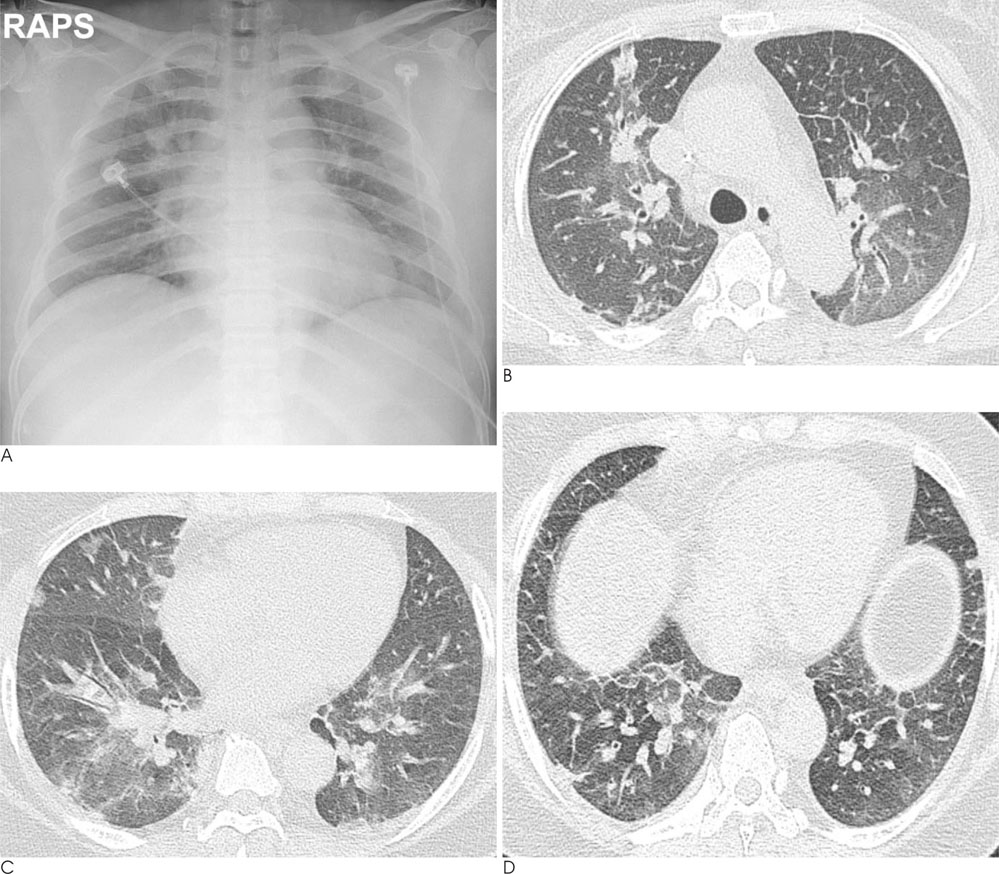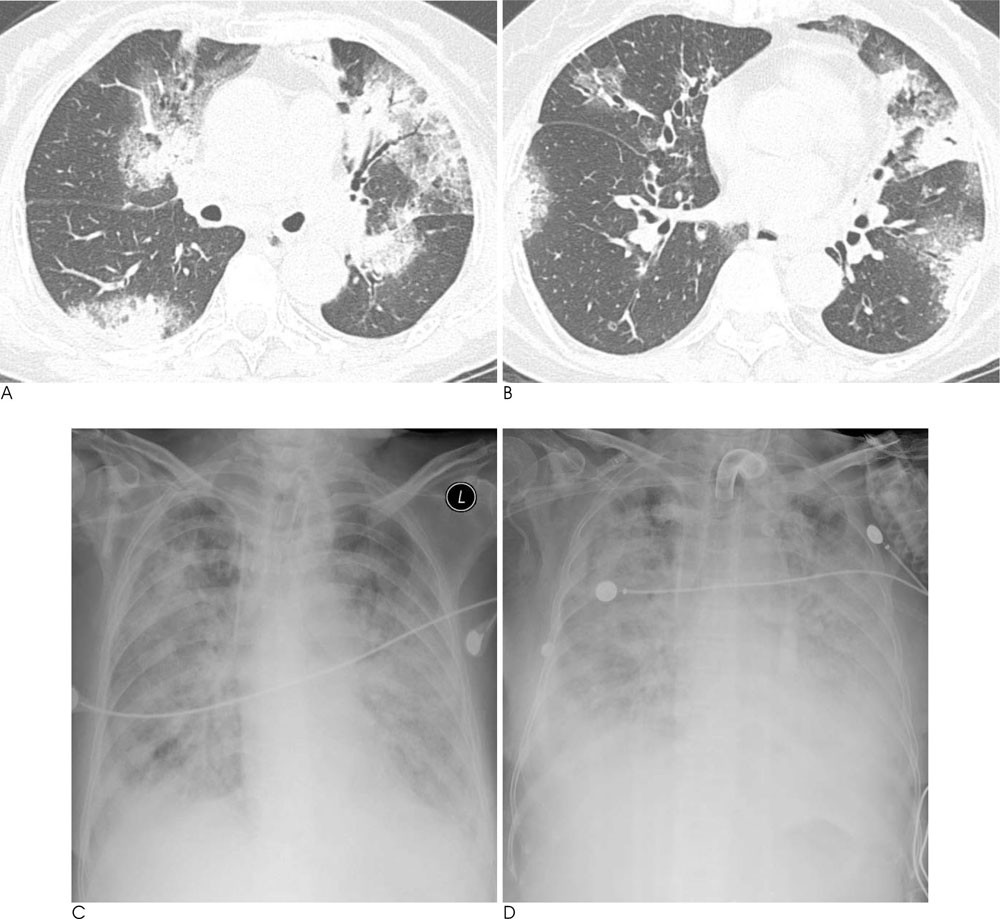J Korean Soc Radiol.
2010 Apr;62(4):361-364. 10.3348/jksr.2010.62.4.361.
Radiologic Findings of Influenza A (H1N1) Pneumonia: Report of Two Cases
- Affiliations
-
- 1Department of Radiology, Seoul St. Mary's Hospital, College of Medicine, The Catholic University of Korea, Korea. ami@catholic.ac.kr
- 2Department of Internal Medicine, Seoul St. Mary's Hospital, College of Medicine, The Catholic University of Korea, Korea.
- KMID: 1460069
- DOI: http://doi.org/10.3348/jksr.2010.62.4.361
Abstract
- Novel influenza A (H1N1) infection is a highly infectious disease, which has been rapidly spreading worldwide since it was first documented in March of 2009 in Mexico. We experienced and report two cases of Influenza A (H1N1) pneumonia, accompanied by chest radiographic and CT findings. The chest radiographs revealed diffuse haziness and extensive airspace consolidation, whereas the CT scans demonstrated multifocal areas of ground glass opacity and airspace consolidation with a CT halo sign.
MeSH Terms
Figure
Reference
-
1. Perez-Padilla R, de la Rosa-Zamboni D, Ponce de Leon S, Hernandez M, Quiñones-Falconi F, Bautista E, et al. Pneumonia and respiratory failure from swine-origin influenza A (H1N1) in Mexico. N Engl J Med. 2009; 361(13):680–689.2. Baker MG, Wilson N, Huang QS, Paine S, Lopez L, Bandaranayake D, et al. Pandemic influenza A (H1N1)v in New Zealand: the experience from April to August 2009. Euro Surveill. 2009; 14(34):pii=19319.3. Hahne S, Donker T, Meijer A, Timen A, van Steenbergen J, Osterhaus A, et al. Epidemiology and control of influenza A (H1N1)v in the Netherlands: the first 115 cases. Euro Surveill. 2009; 14(27):pii=19267.4. Gilsdorf A, Poggensee G. Working Group Pandemic Influenza A (H1N1)v. Influenza (H1N1)v in Germany: the first 10,000 cases. Euro Surveill. 2009; 14(34):pii=19318.5. Kim EA, Lee KS, Primack SL, Yoon HK, Byun HS, Kim TS, et al. Viral pneumonias in adults: radiologic and pathologic findings. Radiographics. 2002; 22:S137–S149.6. Lee CW, Seo JB, Song JW, Lee HJ, Lee JS, Kim MY, et al. Pulmonary complication of novel influenza A (H1N1) infection: imaging features in two patients. Korean J Radiol. 2009; 10:531–534.7. Agarwal PP, Cinti S, Kazerooni EA. Chest Radiographic and CT Findings in Novel Swine-Origin Influenza A (H1N1) Virus (S-OIV) Infection. AJR Am J Roentgenol. 2009; 193:1488–1493.
- Full Text Links
- Actions
-
Cited
- CITED
-
- Close
- Share
- Similar articles
-
- Influenza Associated Pneumonia
- A Case of Novel Influenza A (H1N1) Virus Pneumonia Complicated Pnemomediastinum and Subcutenous Emphysema
- A Case of Mycobacterium abscessus Lung Disease in a Patient with H1N1 Influenza Pneumonia
- Two Cases of Spontaneous Pneumomediastinum Complicating Viral Pneumonia Caused by Influenza A Virus, (H1N1 Subtype): A Case Report
- Clinical Features of Hospitalized Patients with Community Acquired Pneumonia during 2009 Influenza A (H1N1) Pandemic



